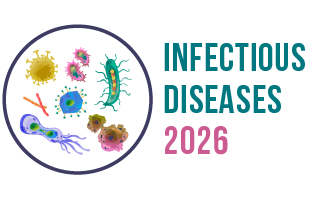4th International Conference on
Infectious Diseases
September 09-10, 2026 | Barcelona, Spain

Infectious Diseases 2026

National Institute of Health, Colombia
Title : Exploring the latency period in Chagas disease: duration and determinants in a cohort from Colombia
Abstract:
Chagas disease is characterized by a variable latency period, the time between infection and the onset of cardiac symptoms, which is influenced by multiple factors. Understanding these factors is essential for improving disease management and prevention. This study involved a retrospective follow-up of 578 patients with indeterminate chronic Chagas disease in Colombia, using the AFT Weibull model to evaluate the disease latency time. The results showed that 53.5% of patients developed cardiac disease, with a median latency period of 18.5 years (95% CI 16 to 20). Significant findings included a reduction in latency periods for individuals with the TcISyl genotype (TR 0.72; 95% CI 0.61 to 0.80), as well as for those who had lived in endemic areas for 5–15 years (TR 0.80; 95% CI 0.67 to 0.95), 15–30 years (TR 0.63; 95% CI0.53 to 0.74), or over 30 years (vs. 5 years), who had a shorter latency period of 14.4 years (95% CI 13 to 16). Conversely, patients who received etiological treatment had a significantly longer median latency period of 28.7 years (95% CI 24 to 34). The study also found that male gender, longer residence in endemic areas, and the presence of the TcISyl genotype were independently associated with shorter latency periods. These results underscore the importance of genetic, environmental, and treatment-related factors in Chagas disease progression. By providing new insights into latency time, these findings contribute to the development of more targeted strategies for managing and controlling Chagas disease, particularly in endemic regions.
Biography:
Physician with extensive experience and a strong focus on epidemiology. His research integrates statistical, economic, and epidemiological methods to explore the distribution, risk factors, and determinants of infectious tropical diseases, with a particular emphasis on vector-borne illnesses such as Chagas disease, leishmaniasis, and malaria. His work aims to inform disease control strategies and health event management.
